From residential to commercial, the buying process for building and construction trades is changing. No matter your role in building, whether you are a contractor, designer or vendor, at the heart of mapping out your construction marketing strategy sits your website. It’s time to rethink the critical role it plays in attracting, converting and retaining construction customers, B2C and B2B.

Your domain is the hub where research is done and your pipeline funnel gets filled up. It’s no longer enough to just have a portfolio or brochure style website. But what are the must haves? Instead of telling you, we’ll show you. Here are three examples of websites from the building and construction industry that are doing it right. We’ll break down who they are and why their websites are something to aspire to for brands looking to up their marketing game.
Why do websites need to be updated? Because most people visiting them aren’t ready to buy. Digital media has put buyers in the driver seat, completing an overwhelming majority of their research before they ever reach out to a brand through their website or sales team. That means in order to connect with prospects, websites need to be refactored to provide value early in the buyer’s journey, and opportunities to convert prospects beyond “contact us” or “request a quote”. 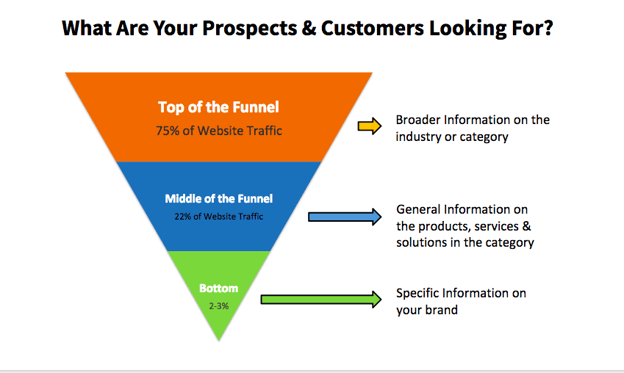
Websites need to be refactored to provide value early in the buyer’s journey and with opportunities to convert prospects beyond “contact us” or “request a quote”. #ConstructionMarketing #ContentMarketing [Click to Tweet]
Superwarm
Superwarm is a UK based gas boiler and central heating systems installer. As a home services vendor, they need to compete with a sea of other heating vendors – so being found, building brand and building pipeline is critical.
What their website does well
Superwarm is a great example of a full funnel, modern marketing journey to emulate. First, their website is fine-tuned for conversion driving visitors to “get a free quote”.

But as we established in our opening paragraphs, it’s not enough to just make it easy for people to reach out for a quote. Only a small percentage of your visitors are ready for this stage. To build a scalable, forecastable marketing machine, we need a marketing strategy and website that maps to your buyers’ needs throughout their journey. Here’s how that looks at Superwarm.

First, they create blog content that addresses various questions buyers may have at various stages of the buyer journey. As a refresher, we think of the journey in three segments: awareness, consideration and decision.
The blog posts attract traffic from organic search, social media, email and potential paid media (search, social and display ads).
As a reader scrolls through the post, they are offered an opt-in, a bonus piece of content from a library of resources, also mapped to their stage in the buyer journey.
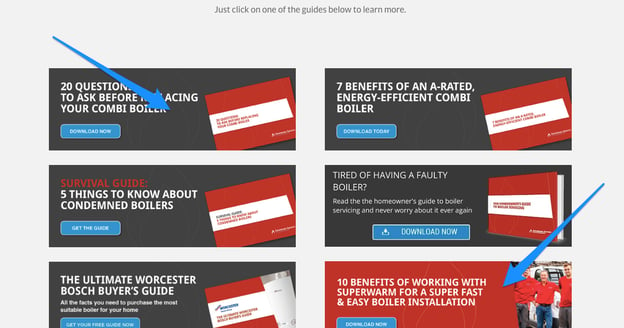
These offers help educate the buyer, providing value but also help Superwarm build a marketing database of prospects they can market to and nurture.
PorchCo
The Porch Company is both an online store, offering porch components for building as well as a construction team.
What their website does well
The Porch Company is a prolific blogger. I mean – prolific in focus and volume. Just look at their category structure and number of posts.
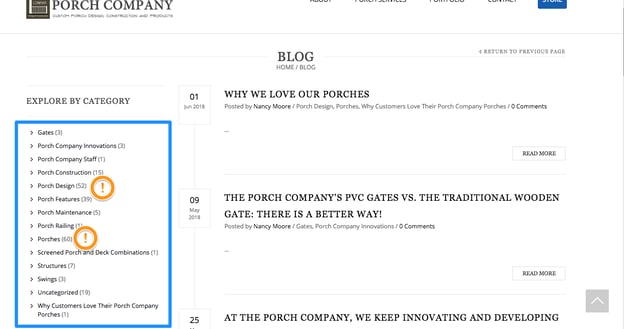
Yes, 52 posts on blog design, at first glance I’m already sold on their authority on porches.
But here’s where this gets really awesome. If you dig into their content – it’s really really focused. So often we run into the “I’ve blogged for 6 months and nothing has happened so I give up” syndrome.
Here’s the deal. Your blogging tactic is failing as part of your overall digital strategy for 1 (or all) of 3 reasons.
- You don’t stick with it. Blogging and content is about the long game. Each month builds exponentially on the month before in terms of traffic and lead generation capacity. Here’s what that looks like in terms of growth over time based on research conducted by HubSpot.
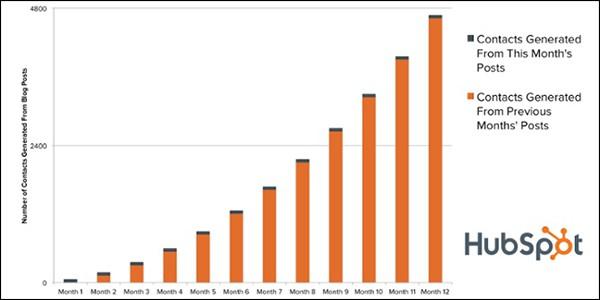
- Your content is haphazard. Blogging for blogging sake isn’t helpful. It needs to be tied to your buyer personas, their buying journey and the topic you are trying to rank for. That means you have a lot to think about as you plan out your content strategy. You can’t just pick topics to write about willy-nilly.
- Your content isn’t supported with promotion. The Porch Company didn’t just grow a strong organic traffic channel by publishing consistently. They have a ton of backlinks to help the content rank. Backlinks come from creating great content – but also active promotion and digital outreach. Reaching out to influencers and others who will carry your message for you.
The Korte Company
Korte is a design-build construction company with a diverse set of industry experience and expertise. They are another great example, like Superwarm of a website that works, for today’s buyer.
What their website does well
One of the best things Korte does well is showcase expertise and thought leadership within their verticals. Let’s walk through one example to see how this plays out. Let’s say you are a project manager assigned to work with your local city on building a new hangar at your regional airport. But you’re not sure where to start. Like most people, you might start with a search.
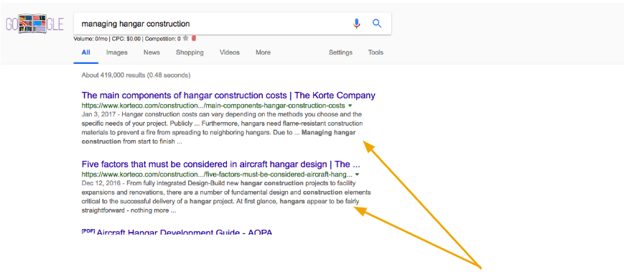
There may not be a ton of monthly searches for this phrase every month, but those searching it are pretty good candidates for a firm like Korte. Look at that, they have some content where they share their expertise. Let’s click through and see what we find.
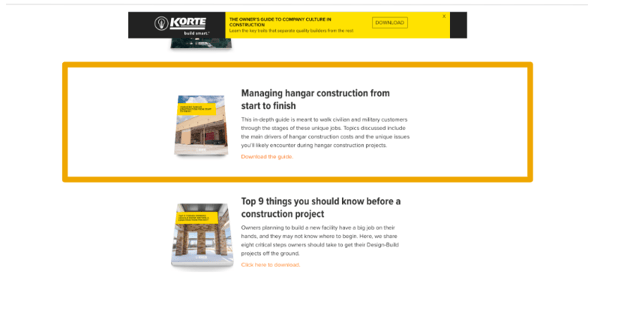
From blogs to resources, Korte has everything I need at this early stage. This guide, start to finish looks promising.

Before I get my copy, I share some information about myself. Korte uses that to follow up with me.

Construction/Building Website Best Practices
What all of the examples show, is that building modern marketing programs require a website that does more than just showcases your latest work. The three key themes from these case studies are: conversion, content and user experience.
Construction websites that convert
Make sure your website is built to convert. It’s not enough to just have a contact us or a request quote. We want multiple conversion paths so we can build a marketing database and sales pipeline of active prospects.
Marketing content throughout the journey
The best way to build websites that convert, is to host marketing content throughout the buyer journey on your website. Provide resources when people are early in the process of research all the way up to the point where they are comparing you to the competitors and need a final nudge.
User experience that’s concise
Make sure users can get through your site to the goals that best suit them. From research to contact, make the flow intuitive and helpful, don’t bog down their journey by cramming everything about your company – on every single page.
Final word
We’d love to hear from you. What construction sites have you found that are built for the modern buyer? Leave us a comment with a link and why you think it works well for today’s buyer.



